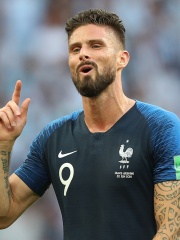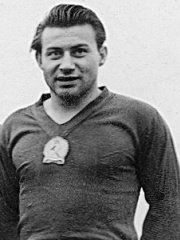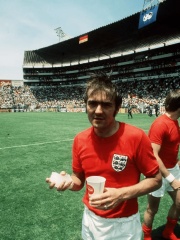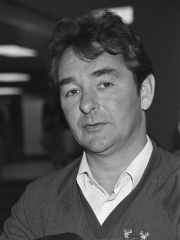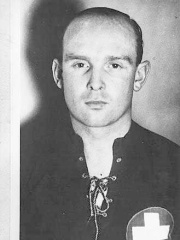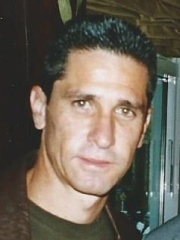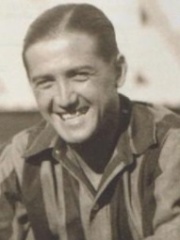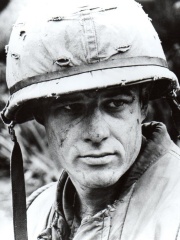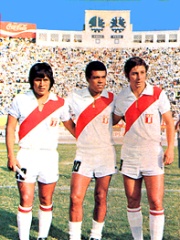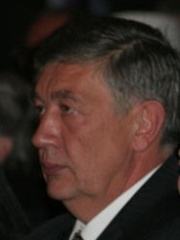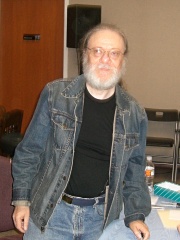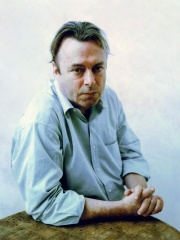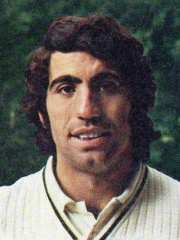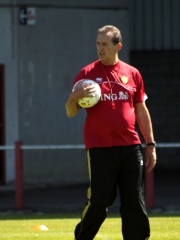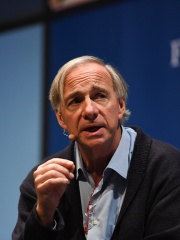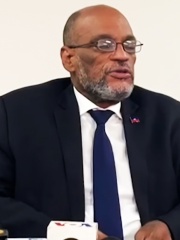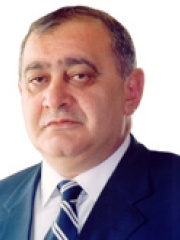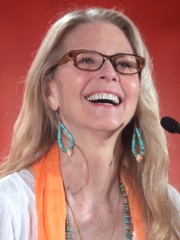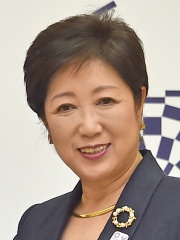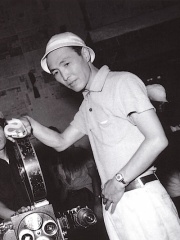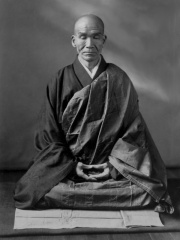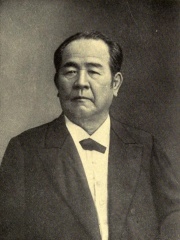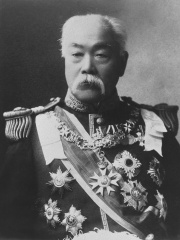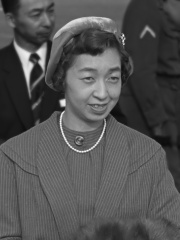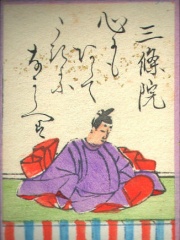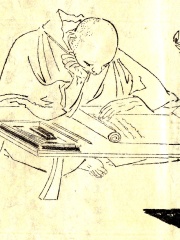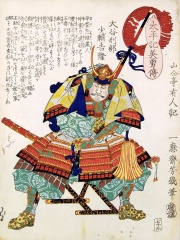SOCCER PLAYER
Hiroji Imamura
1949 - Today

 Hiroji Imamura
Hiroji Imamura
Hiroji Imamura (今村 博治, Imamura Hiroji; born April 27, 1949) is a former Japanese football player. He played for Japan national team. Read more on Wikipedia
His biography is available in 48 different languages on Wikipedia. Hiroji Imamura is the 792nd most popular soccer player (up from 1,632nd in 2024), the 695th most popular biography from Japan (up from 1,006th in 2019) and the 171st most popular Japanese Soccer Player.
Memorability Metrics
Page views of Hiroji Imamura by language
Among SOCCER PLAYERS
Among soccer players, Hiroji Imamura ranks 792 out of 21,273. Before him are Lucien Muller, Olivier Giroud, Hans van Breukelen, László Budai, Hideo Sakai, and Masaki Yokotani. After him are Terry Cooper, Alfréd Schaffer, Brian Clough, André Abegglen, Jorginho, and Peregrino Anselmo.
Most Popular Soccer Players in Wikipedia
Go to all RankingsLucien Muller
1934 - Present
HPI: 63.08
Rank: 789
Olivier Giroud
1986 - Present
HPI: 63.08
Rank: 790
Hans van Breukelen
1956 - Present
HPI: 63.07
Rank: 791
László Budai
1928 - 1983
HPI: 63.06
Rank: 792
Hideo Sakai
1909 - 1996
HPI: 63.06
Rank: 793
Masaki Yokotani
1952 - Present
HPI: 63.04
Rank: 794
Hiroji Imamura
1949 - Present
HPI: 63.02
Rank: 795
Terry Cooper
1944 - 2021
HPI: 63.02
Rank: 796
Alfréd Schaffer
1893 - 1945
HPI: 63.01
Rank: 797
Brian Clough
1935 - 2004
HPI: 63.01
Rank: 798
André Abegglen
1909 - 1944
HPI: 63.01
Rank: 799
Jorginho
1964 - Present
HPI: 63.01
Rank: 800
Peregrino Anselmo
1902 - 1975
HPI: 63.00
Rank: 801
Contemporaries
Among people born in 1949, Hiroji Imamura ranks 173. Before him are Brad Davis, Hugo Sotil, Nebojša Radmanović, Tommy Ramone, Christopher Hitchens, and Manuel Orantes. After him are Georges Leekens, Ray Dalio, Ariel Henry, Shusaku Hirasawa, Andranik Margaryan, and Lindsay Wagner.
Others Born in 1949
Go to all RankingsBrad Davis
ACTOR
1949 - 1991
HPI: 63.32
Rank: 167
Hugo Sotil
SOCCER PLAYER
1949 - 2024
HPI: 63.30
Rank: 168
Nebojša Radmanović
POLITICIAN
1949 - Present
HPI: 63.24
Rank: 169
Tommy Ramone
MUSICIAN
1949 - 2014
HPI: 63.14
Rank: 170
Christopher Hitchens
JOURNALIST
1949 - 2011
HPI: 63.12
Rank: 171
Manuel Orantes
TENNIS PLAYER
1949 - Present
HPI: 63.02
Rank: 172
Hiroji Imamura
SOCCER PLAYER
1949 - Present
HPI: 63.02
Rank: 173
Georges Leekens
COACH
1949 - Present
HPI: 63.01
Rank: 174
Ray Dalio
BUSINESSPERSON
1949 - Present
HPI: 62.84
Rank: 175
Ariel Henry
POLITICIAN
1949 - Present
HPI: 62.82
Rank: 176
Shusaku Hirasawa
SOCCER PLAYER
1949 - Present
HPI: 62.81
Rank: 177
Andranik Margaryan
POLITICIAN
1949 - 2007
HPI: 62.75
Rank: 178
Lindsay Wagner
ACTOR
1949 - Present
HPI: 62.71
Rank: 179
In Japan
Among people born in Japan, Hiroji Imamura ranks 695 out of 6,245. Before him are Yuriko Koike (1952), Ishirō Honda (1911), Hideo Sakai (1909), Masaki Yokotani (1952), Yoshihiro Togashi (1966), and Kōdō Sawaki (1880). After him are Shibusawa Eiichi (1840), Matsukata Masayoshi (1835), Shigeko Higashikuni (1925), Emperor Sanjō (976), Yoshida Kenkō (1283), and Ōtani Yoshitsugu (1559).
Others born in Japan
Go to all RankingsYuriko Koike
POLITICIAN
1952 - Present
HPI: 63.08
Rank: 689
Ishirō Honda
FILM DIRECTOR
1911 - 1993
HPI: 63.07
Rank: 690
Hideo Sakai
SOCCER PLAYER
1909 - 1996
HPI: 63.06
Rank: 691
Masaki Yokotani
SOCCER PLAYER
1952 - Present
HPI: 63.04
Rank: 692
Yoshihiro Togashi
COMIC ARTIST
1966 - Present
HPI: 63.04
Rank: 693
Kōdō Sawaki
RELIGIOUS FIGURE
1880 - 1965
HPI: 63.03
Rank: 694
Hiroji Imamura
SOCCER PLAYER
1949 - Present
HPI: 63.02
Rank: 695
Shibusawa Eiichi
BUSINESSPERSON
1840 - 1931
HPI: 63.01
Rank: 696
Matsukata Masayoshi
POLITICIAN
1835 - 1924
HPI: 62.99
Rank: 697
Shigeko Higashikuni
COMPANION
1925 - 1961
HPI: 62.97
Rank: 698
Emperor Sanjō
POLITICIAN
976 - 1017
HPI: 62.96
Rank: 699
Yoshida Kenkō
WRITER
1283 - 1350
HPI: 62.93
Rank: 700
Ōtani Yoshitsugu
MILITARY PERSONNEL
1559 - 1600
HPI: 62.92
Rank: 701
Among SOCCER PLAYERS In Japan
Among soccer players born in Japan, Hiroji Imamura ranks 171. Before him are Akemi Iwata (1954), Teizo Takeuchi (1908), Kazuyuki Mugita (1984), Nobuo Kawakami (1947), Hideo Sakai (1909), and Masaki Yokotani (1952). After him are Taro Kagawa (1922), Shusaku Hirasawa (1949), Ikuo Takahara (1957), Aritatsu Ogi (1942), Keizo Imai (1950), and Choei Sato (1951).
Akemi Iwata
1954 - Present
HPI: 63.24
Rank: 165
Teizo Takeuchi
1908 - 1946
HPI: 63.22
Rank: 166
Kazuyuki Mugita
1984 - Present
HPI: 63.11
Rank: 167
Nobuo Kawakami
1947 - Present
HPI: 63.11
Rank: 168
Hideo Sakai
1909 - 1996
HPI: 63.06
Rank: 169
Masaki Yokotani
1952 - Present
HPI: 63.04
Rank: 170
Hiroji Imamura
1949 - Present
HPI: 63.02
Rank: 171
Taro Kagawa
1922 - 1990
HPI: 62.83
Rank: 172
Shusaku Hirasawa
1949 - Present
HPI: 62.81
Rank: 173
Ikuo Takahara
1957 - Present
HPI: 62.73
Rank: 174
Aritatsu Ogi
1942 - Present
HPI: 62.70
Rank: 175
Keizo Imai
1950 - Present
HPI: 62.62
Rank: 176
Choei Sato
1951 - Present
HPI: 62.58
Rank: 177

